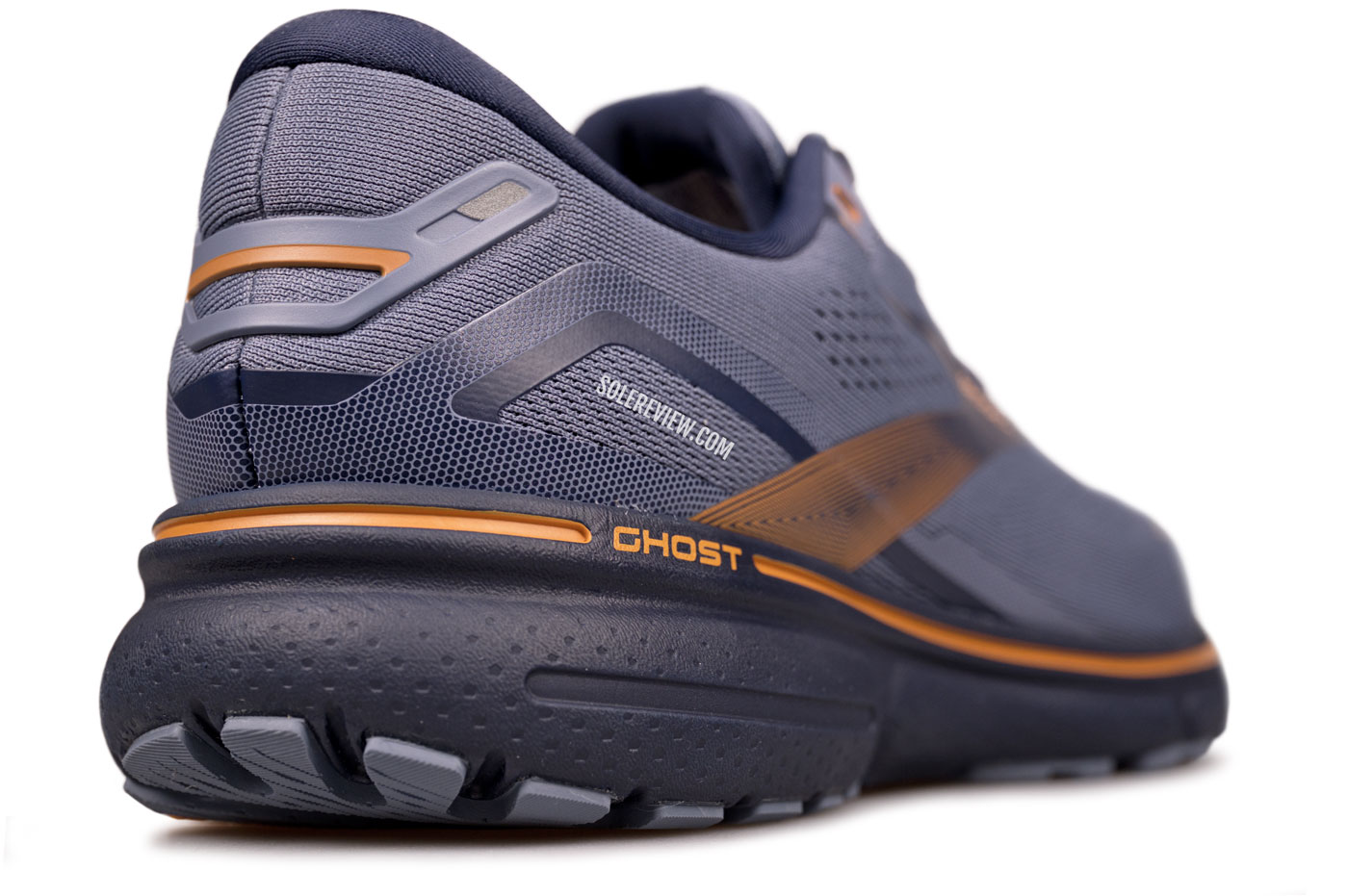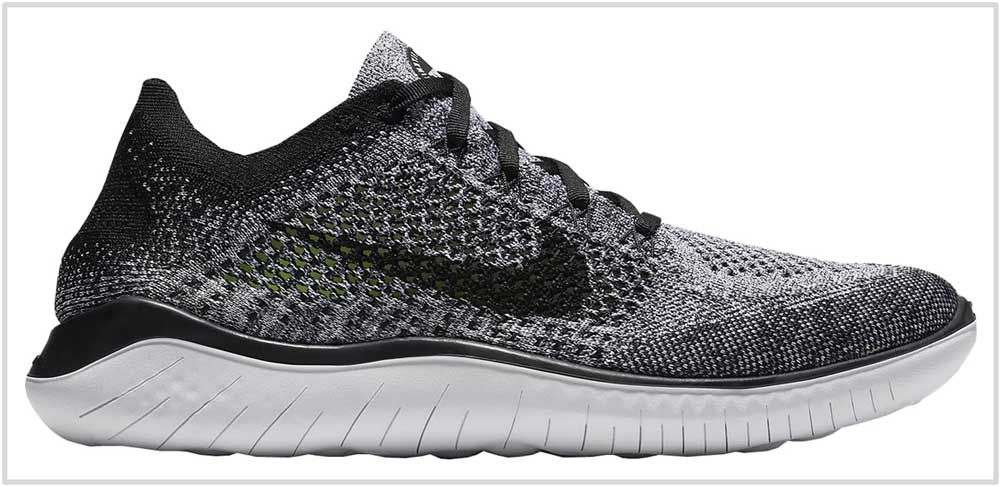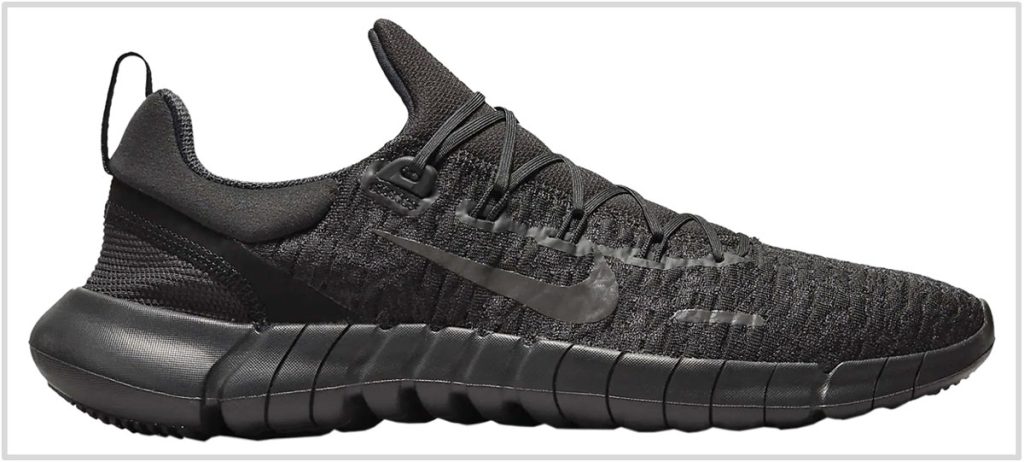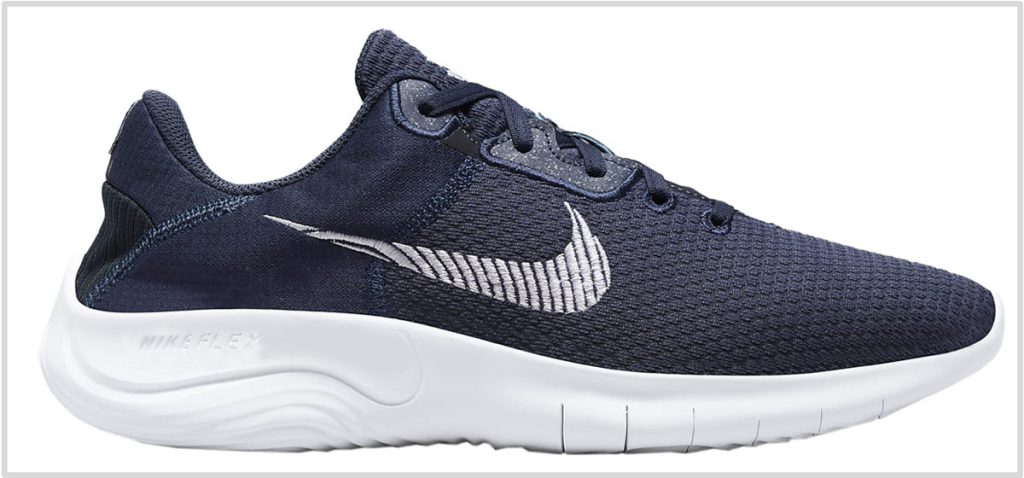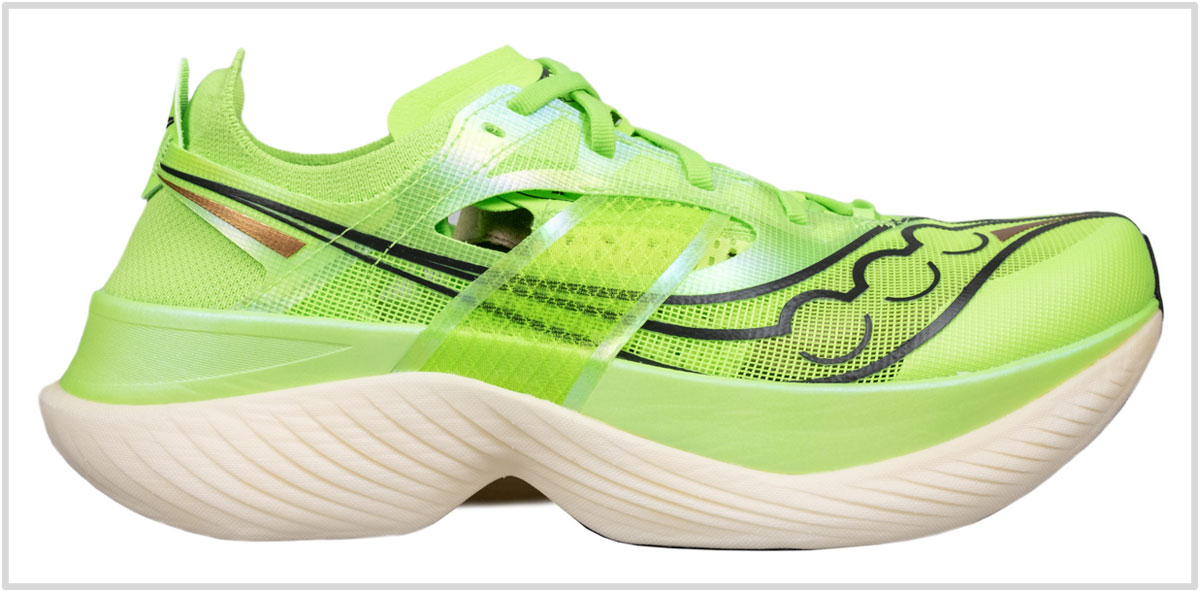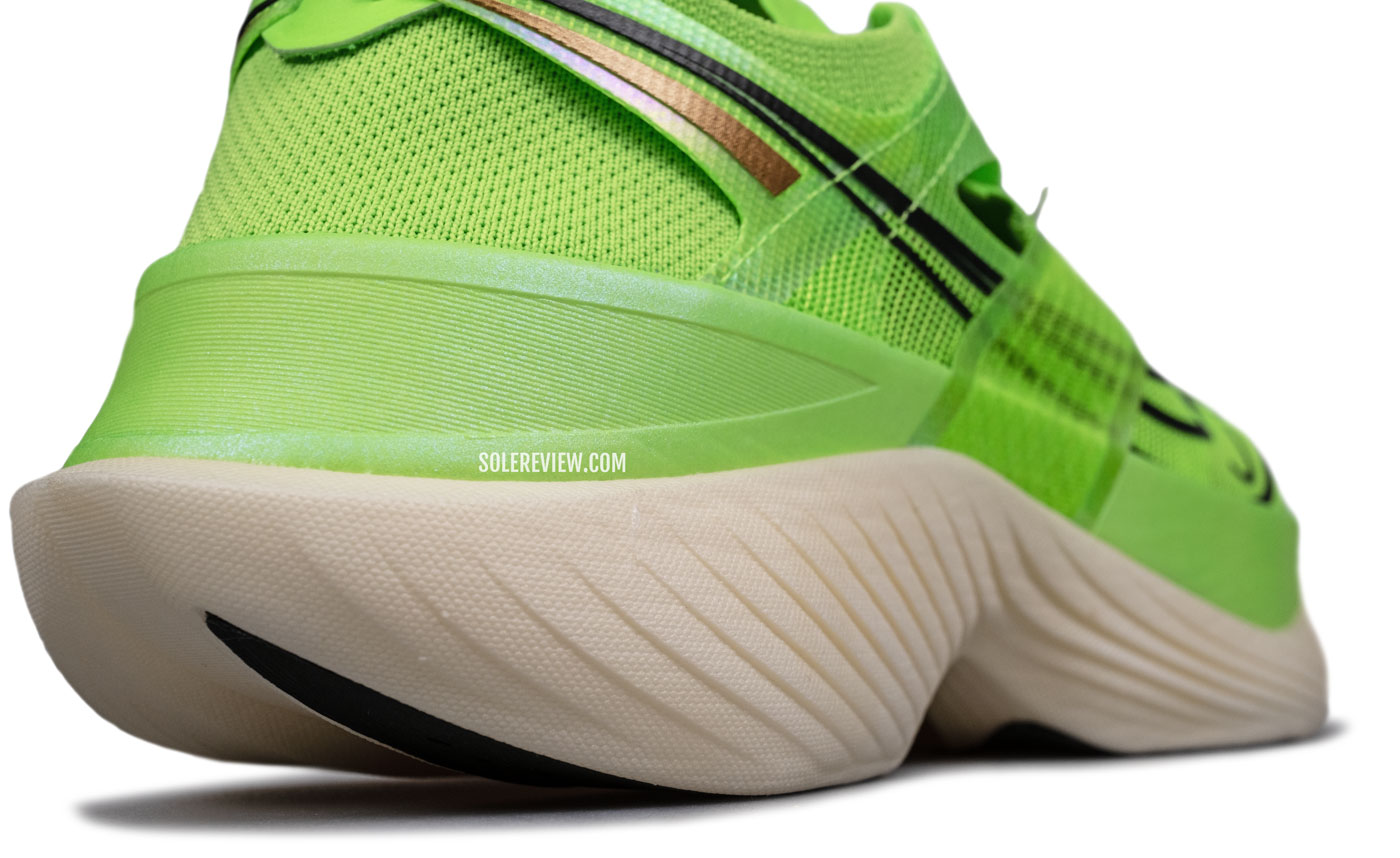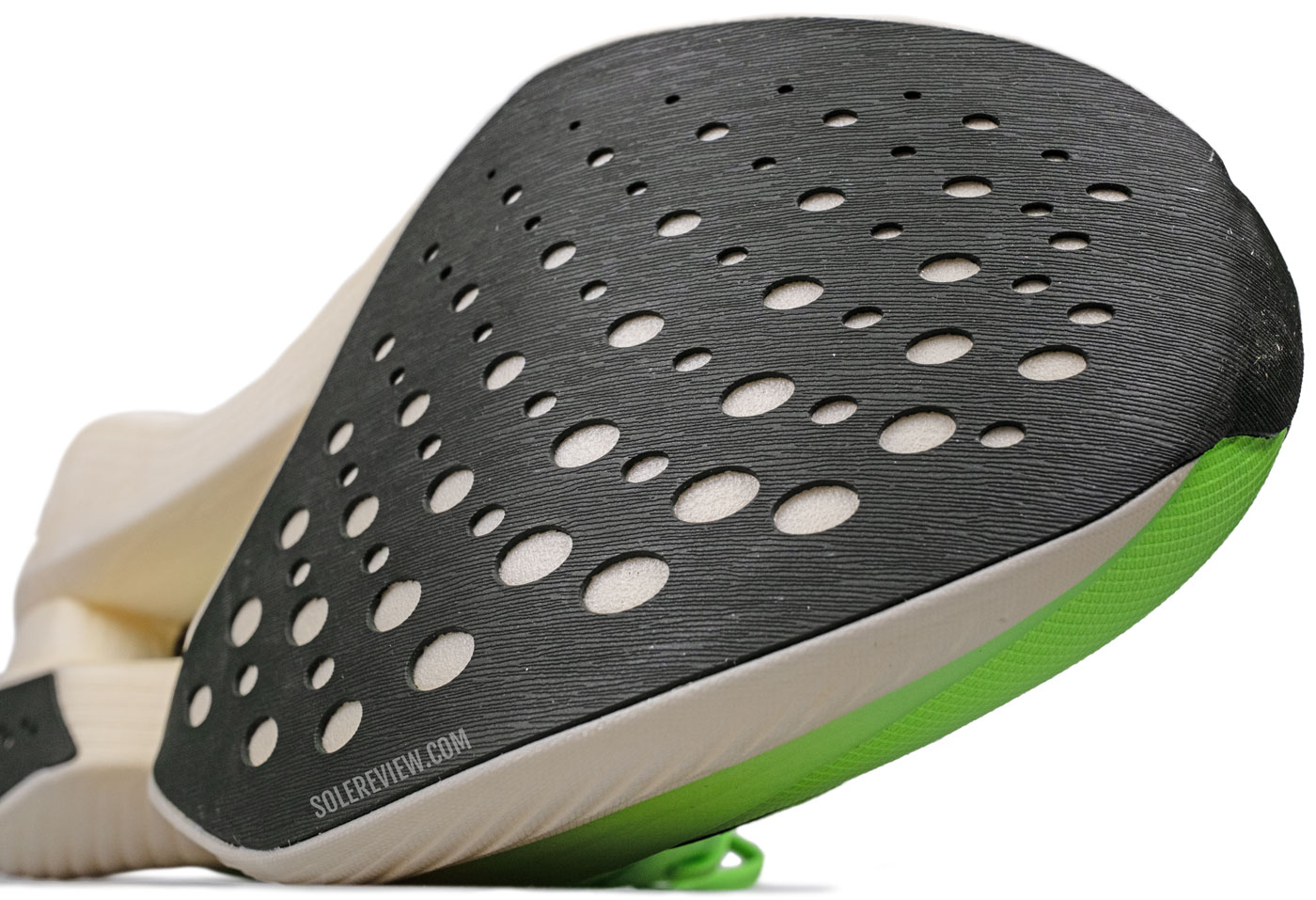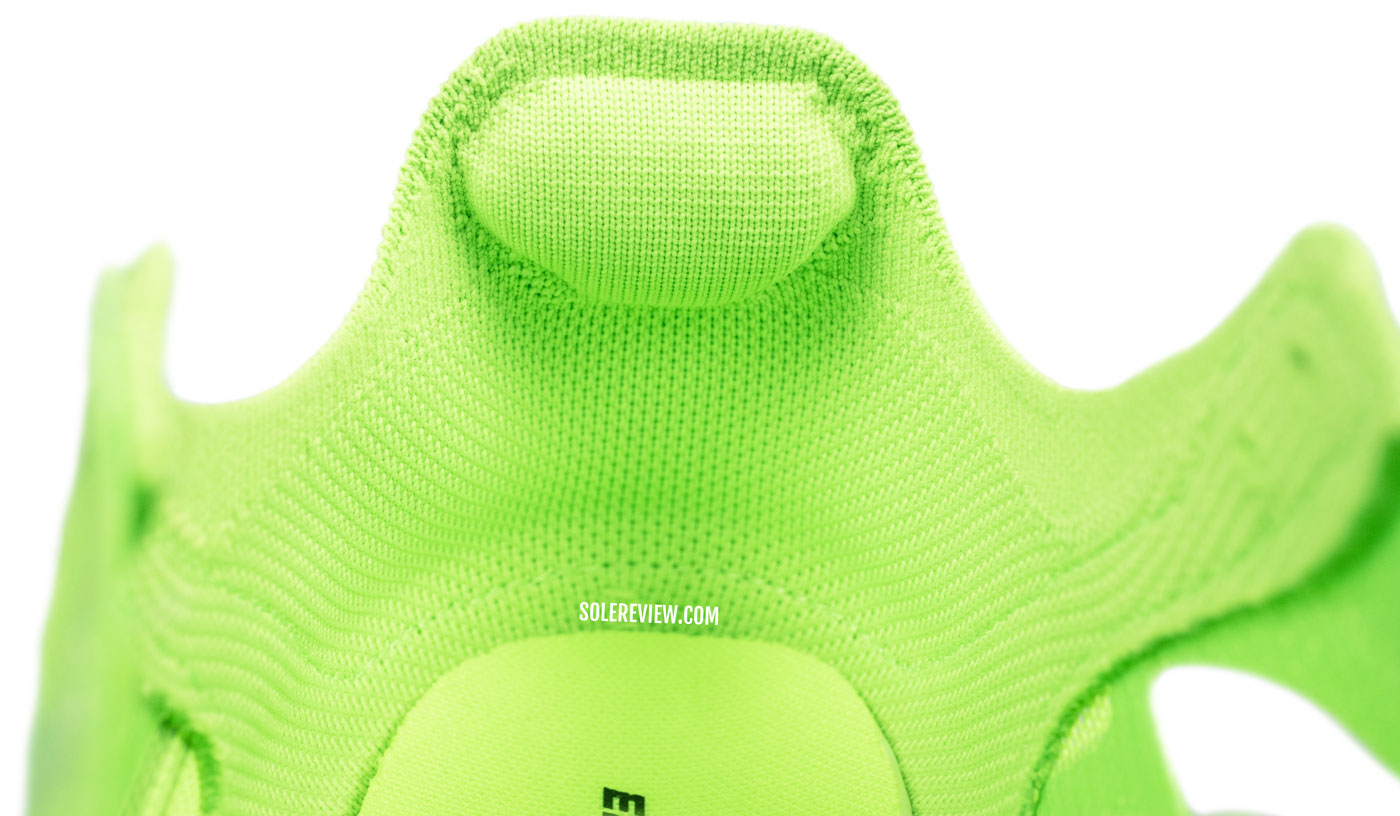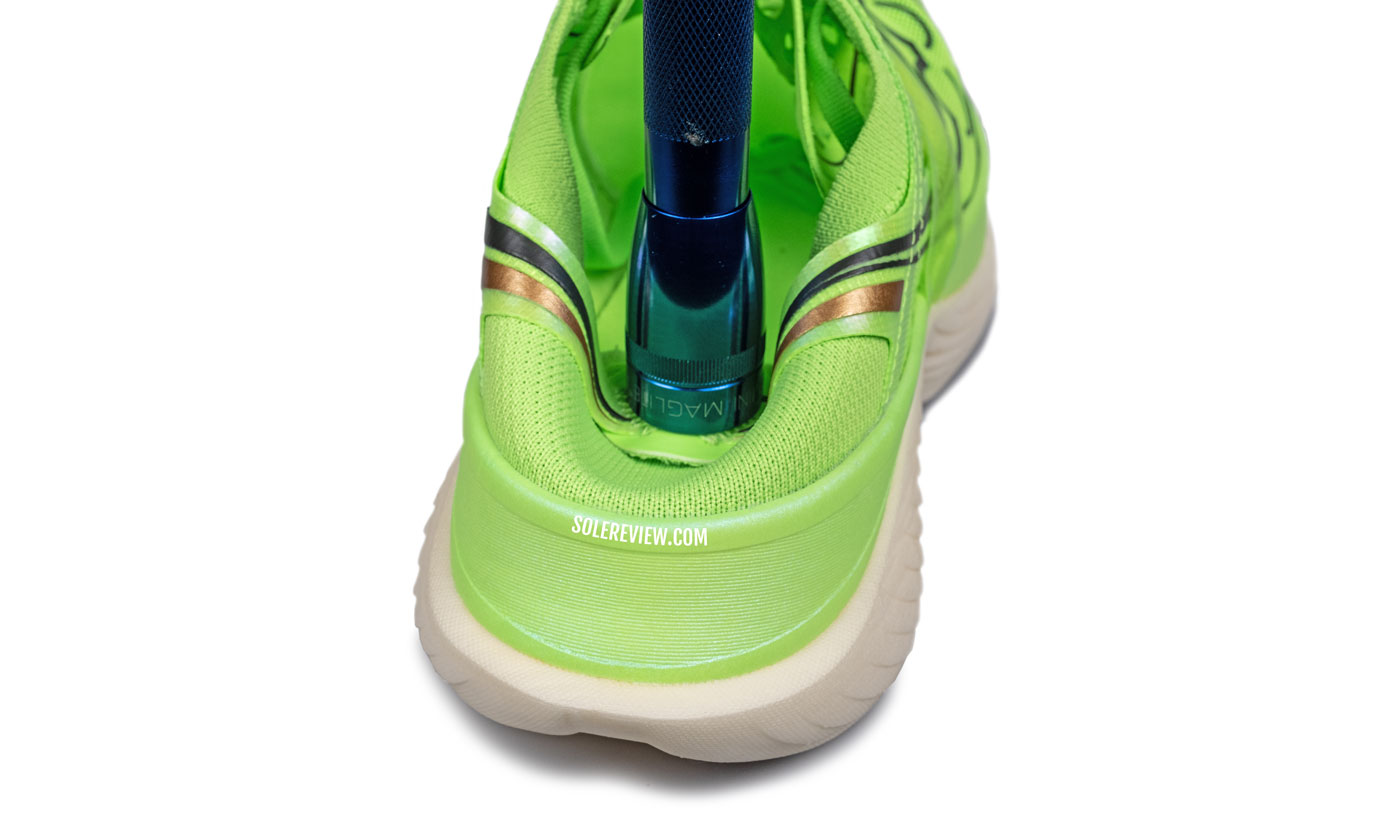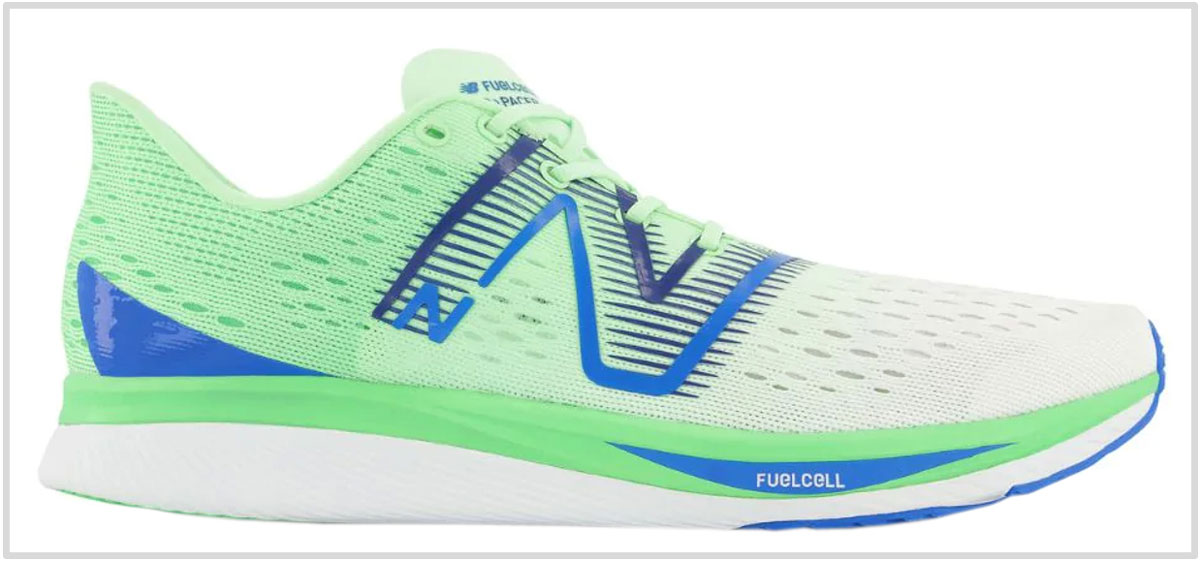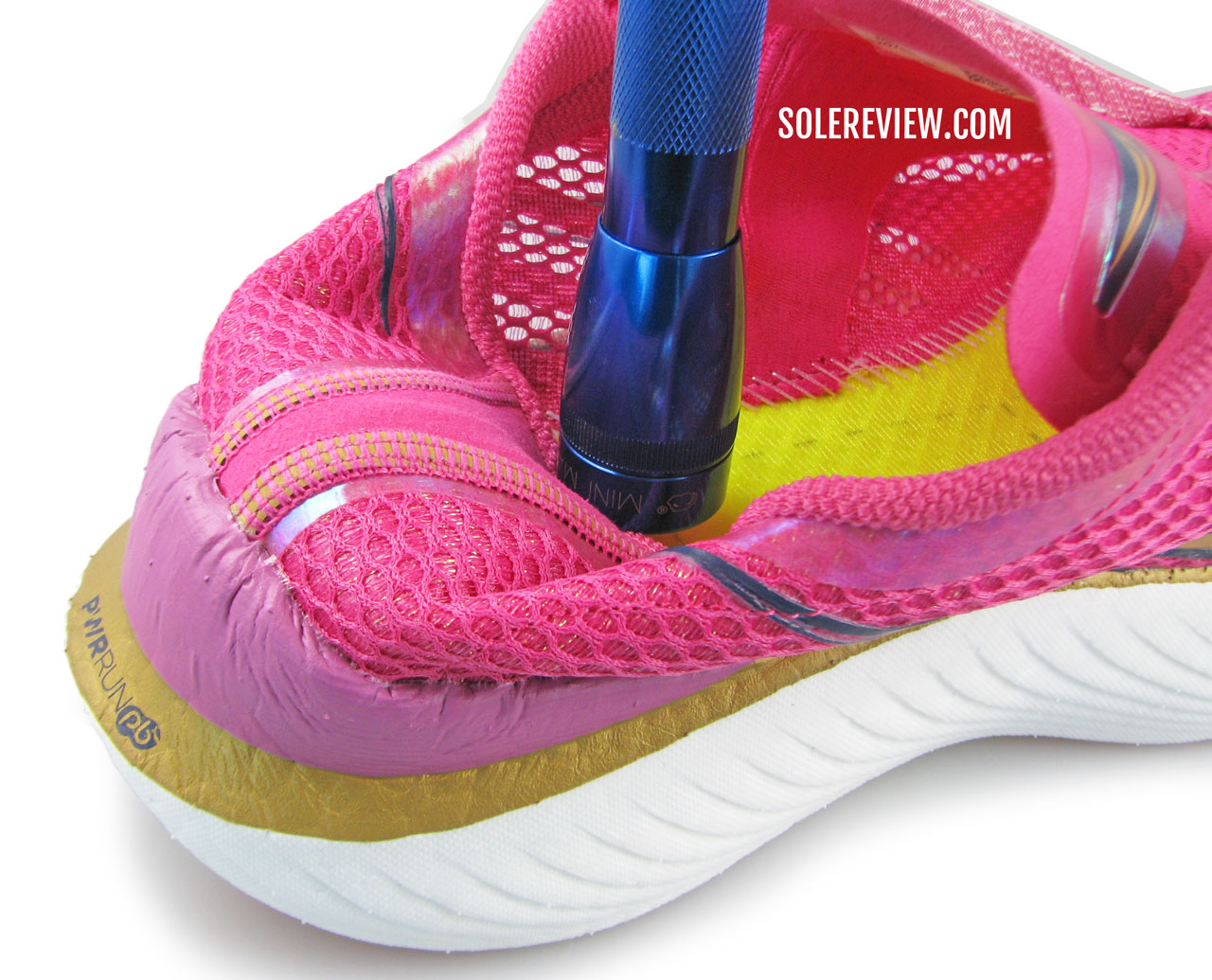
This article has been updated with current models for September 2023. The Hoka Zinal 2 is a new addition.
In this product guide:
- 1. Factors to consider
- 2. Flexible daily trainer with a collapsible heel: Nike Free RN 2018
- 3. Flexible daily trainer with a collapsible heel: Nike Free Run 5.0
- 4. Flexible daily trainer without a heel counter: Nike Flex Experience 11
- 5. Cushioned marathon racer without a heel counter: Saucony Endorphin Elite
- 6. Speed trainer/racer without a heel counter: New Balance SC Pacer
- 7. Cushioned marathon racer without a heel counter: Saucony Endorphin Pro 3
- 8. Speed Trail shoe without a heel counter: Hoka Zinal 2
Most running shoes have a reinforced heel for a good reason. A molded counter addresses a couple of performance needs.
Unless the shoe is poorly designed, an internal or external counter minimizes heel slippage during runs.
Secondly, a stiff counter locks the foot over the midsole. Without a supportive heel, the foot could slide towards the back during runs (especially during uphill sections), and that will affect the ride quality and may also cause blisters.
However, stiff heel counters are an ancient feature that arrived long before running shoes did.
It then transferred to the earliest versions (think the 70s and 80s) of board-lasted running shoes, because at the time, running shoes were built using dress shoe techniques.
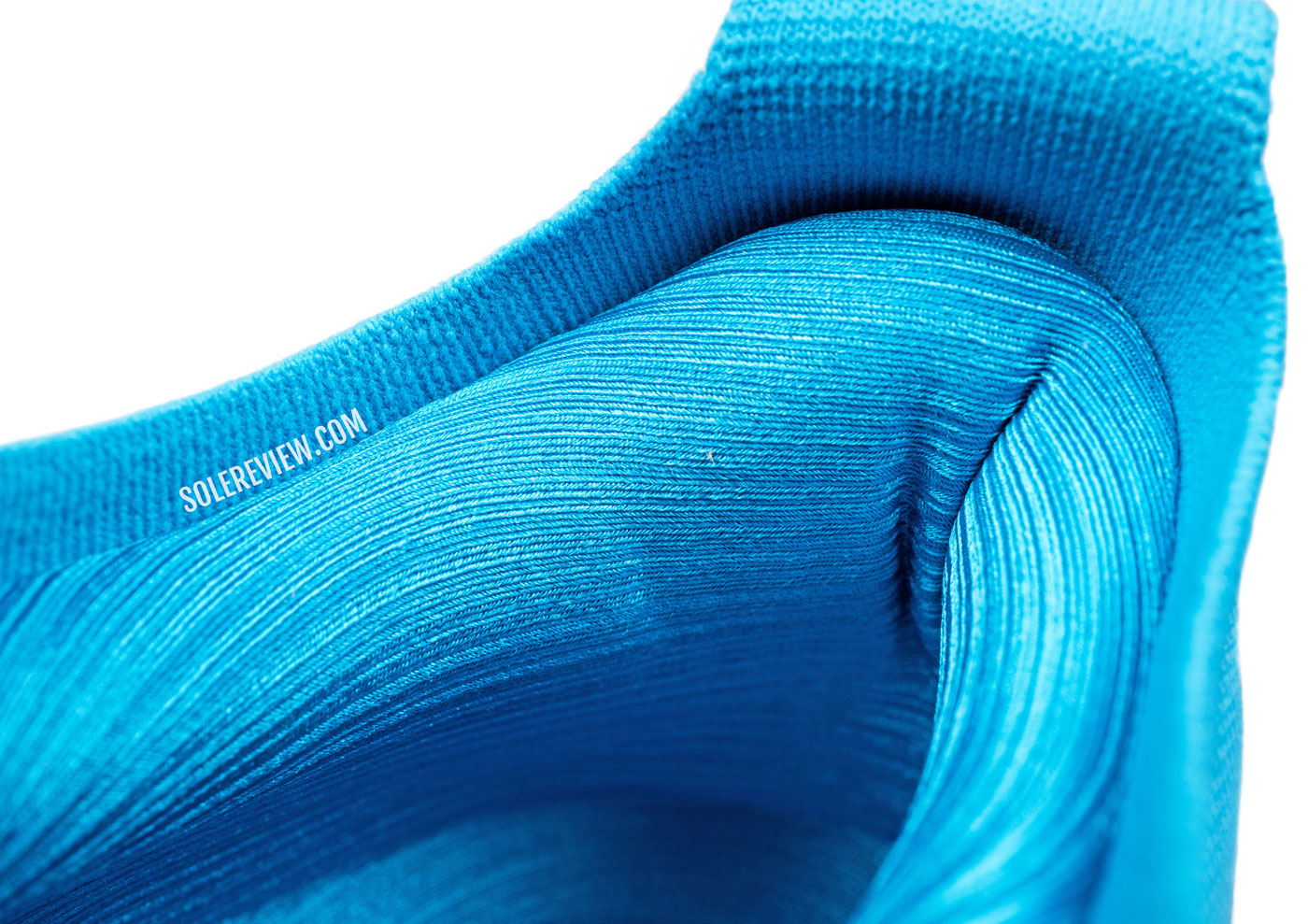
On most running shoes, a hard heel counter works together with the padded collar to make the heel fit better.
Moreover, heel stiffeners were indispensable before high-performance fabrics (like Nike Flyknit) were invented. In modern times, a secure heel fit can be achieved just through knit uppers alone.
For example, elastic mesh uppers like adidas Primeknit and Nike Flyknit grip the heel extremely well. Also, textiles with different stretch (or non-stretch) properties can be used together to create a snug heel fit.
Like everything in life, the merits and drawbacks of a heel-less running shoe can be debated ad infinitum. Nonetheless, this being a buyer’s guide for running shoes without a heel cup, we’ll focus just on the advantages.
A running shoe without a heel counter is an excellent recovery shoe
Running-related injuries like Achilles Tendonitis can be frustrating. While a running shoe without a hard heel counter doesn’t make the recovery process quicker, it certainly makes it more comfortable.
A running shoe with a foldable heel is less likely to create a pressure hot spot. A soft heel counter is particularly helpful for runners with Haglund’s deformity, also known as ‘pump bump’.
A running shoe without a heel cup is easier to wear
There’s something freeing about a running shoe without a hard heel cup.
Some running shoes like the Nike Free Run 5.0 and Free RN Flyknit 2018 have a semi-stretchable upper, so you can leave the laces in a fixed position and take advantage of the elastic heel to slip on the shoe.
This way, you don’t have to fight the laces every time you wear the shoe.
A running shoe with a soft heel means distraction-free comfort
Heel counter or not, the modern approach to designing a running shoe is rooted in minimalism. Just a decade ago, a typical running shoe upper was crowded with stitched and fused overlays. The midsole had various cushioning inserts and plastic shanks.
Today, a running shoe has a knit upper with very few seams. The sole design now relies on superior foam materials rather than layering and clunky TPU shanks. As a result, the upper fit is smoother and so is the ride quality.
The moral of the story is – the fewer the components, the lower the probability of irritation. The same applies to heel counters as well.
A running shoe with a collapsible heel is travel-friendly
A running shoe with a collapsible or foldable heel has a huge advantage during travel. It can be packed nearly flat to save precious space inside a checked bag.
(Related read: The best running shoes for travel)
Solereview recommends: The Nike Free RN 2018 (no heel counter)
Five years after it was first released, the Nike Free RN 2018 is still going strong. We can see why; it’s the next best thing to our favorite Nike shoe – the 2014 Free 4.0 Flyknit.
The stretch mesh of the one-piece upper creates a distraction-free fit experience. The large pores on the forefoot and tongue also allow the air to circulate. And of course, the elastic heel can be folded completely flat.
This 7.5-ounce shoe isn’t just about the soft heel. The dual-density midsole is extremely flexible and comfortable enough for runs up to 10K. This makes the Free RN 2018 an ideal running shoe for travel.
2) The Nike Free Run 5.0 (no heel counter)
The Free Run 5.0 is Nike’s modern interpretation of the flexible shoe concept, but it stays true to its roots. The EVA foam midsole is generously grooved for a high level of flexibility, and the sock-like upper has a soft yet snug fit.
There are a couple of important differences between the Free RN 2018 and Free Run 5.0. The newer model isn’t as deconstructed, and has a narrower fit due to the last shape and sock-like entry.
The heel is lined and padded with foam for comfort, but is completely foldable as it lacks a heel counter.
3) Nike Flex Experience Run 11 (Fully collapsible, no heel counter)
The Flex Experience 11 is a running shoe that’s inspired by the Nike Free form factor. Like the Free, the deep flex grooves of the midsole make the shoe very easy to bend – thus allowing the foot to flex naturally. The foam midsole is also cushioned enough for everyday runs and in-gym use.
The midsole isn’t the only thing that the Flex Experience borrows from the Free. The soft mesh upper is an exercise in deconstructed minimalism, so the lack of an internal counter makes the heel fully collapsible.
4) Saucony Endorphin Elite (no heel counter)
At the risk of upsetting a few Saucony loyalists, we’ll say it – the Endorphin Elite is unapologetically ‘inspired’ by the adidas adios Pro – the German brand’s top-tier marathon racer.
Looking at the ‘slotted’ Carbon plate, we’d say that there’s a bit of the Asics Metaracer in there as well.
And that’s what the Saucony Endorphin Elite is as well. At an MSRP of $275, It’s a tier above the Endorphin Pro, and has a few features that the other Endorphin models don’t.
The midsole doesn’t use Pwrrun PB, but Pwrrun HG – a denser material that feels more resilient while being cushioned and bouncy.
The midsole even has an adidas-style window exposing the Carbon fiber plate. The flat outsole with circular windows is a design that has worked well on the Asics Metaracer and adidas adios Pro. Despite the lack of defined lugs, the flat outsole grips well.
On the road, the 7.2-ounce Saucony Endorphin Elite performs as advertised. The midsole and plate deliver a snappy blend of cushioning comfort and bounce – just what a fast marathon requires. The Carbon plate design is where Saucony adds a fresh take. The plate has an articulated fork-like design so it’s more effective during toe-offs.
The ultra-lightweight upper strips away everything that’s unnecessary. That includes an internal counter, so the heel is fully collapsible without (negatively) affecting the fit.
5) New Balance Supercomp Pacer (soft semi-collapsible heel)
The New Balance Supercomp Pacer is a new speed trainer that combines a soft Fuelcell midsole with a Carbon transition plate. If the concept sounds familiar, you’re probably thinking of the Nike ZoomX Streakfly.
If you ask us, it’s good to see brands releasing low-profile speed trainers that use contemporary materials for better ride comfort.
For example, the SC Pacer feels nowhere as harsh as the 1400 or 1500V6 from a few years ago; but still manages to feel quick because of its low stack and carbon plate. The outsole rubber is applied sparingly in only critical areas for weight savings. The SC Pacer is ideal for 5K to 10K races, as well as tempo training and cruise intervals.
This lightweight shoe (7.1 ounce/201 grams) also has an upper to match. While snug, the all-mesh upper is breathable with a soft racer tongue.
Lastly, the lightly padded heel is the reason why the SC Pacer features on this list. It lacks a stiff heel counter, so its semi-collapsible design is gentle on the Achilles.
6) Saucony Endorphin Pro V3 (soft semi-collapsible heel)
The Saucony Endorphin Pro V3 is a worthy adversary to the Nike Vaporfly, because it’s based on a similar form factor and materials.
Like Nike’s signature racing shoe, the Endorphin Pro 3 has an S-curved Carbon plate inside a PEBA foam midsole. We discussed the pros and cons of this shoe at length in our review.
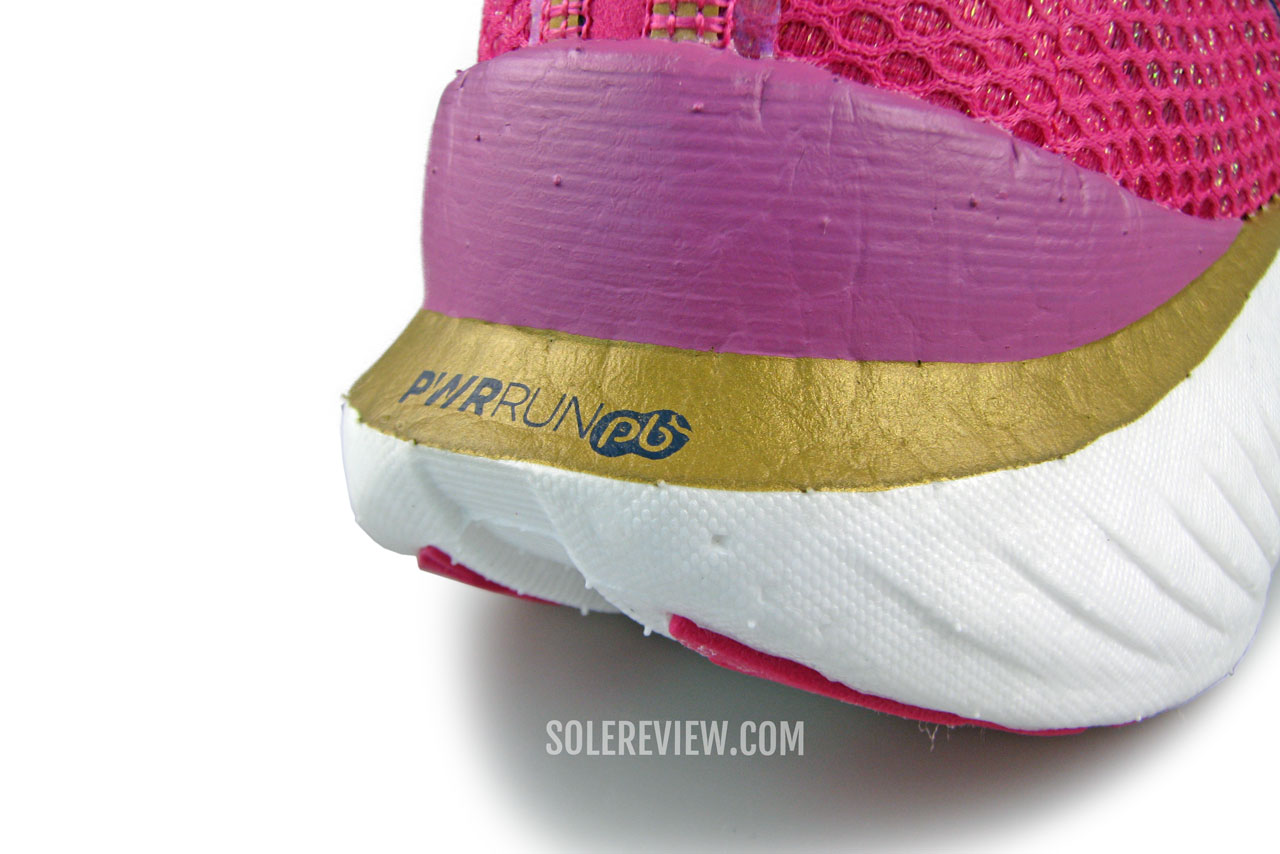
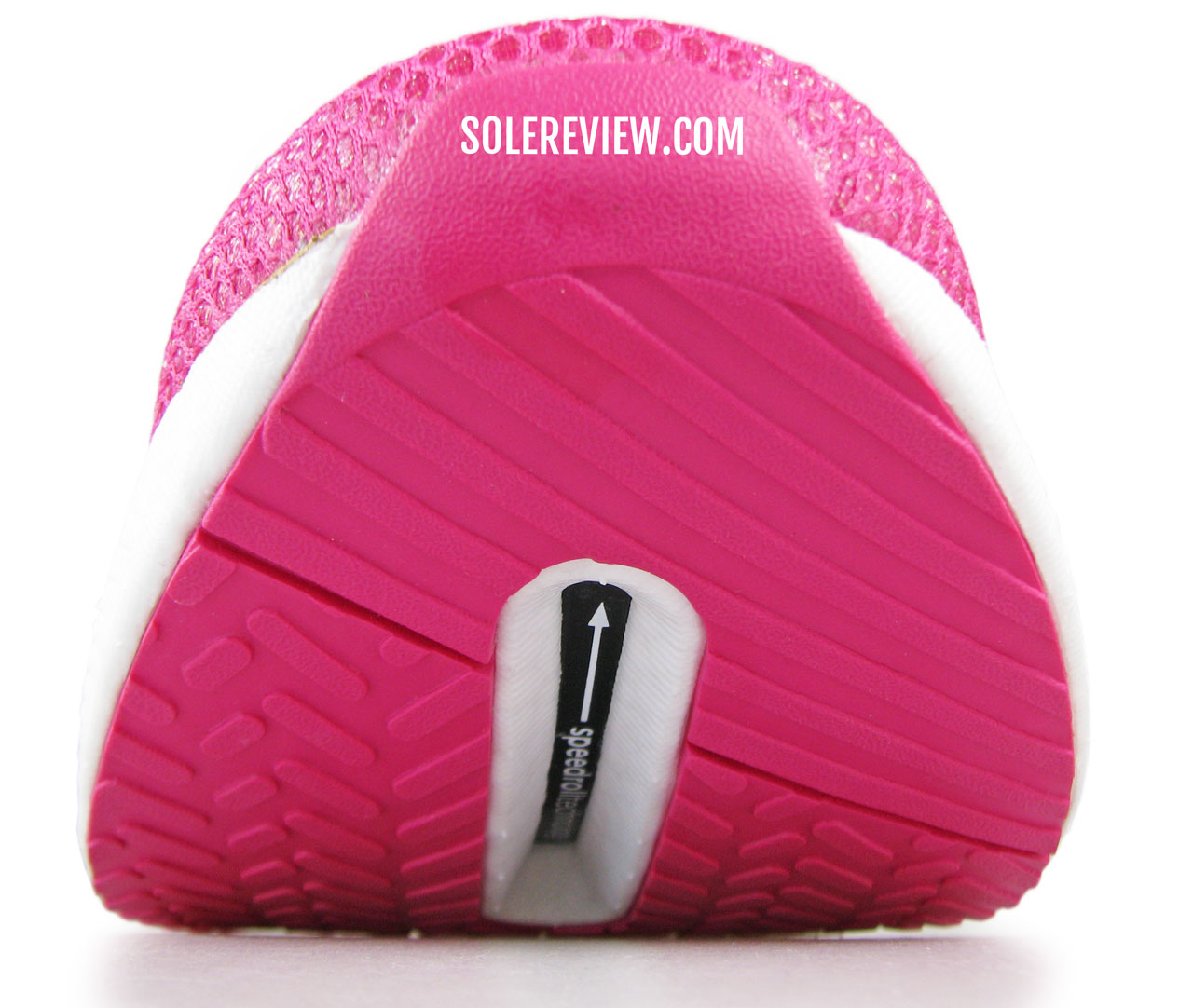
The high toe spring and rigid forefoot help the foot ‘roll forward’ during transitions.
The resulting ride delivers a heady blend of snappy responsiveness with a cushioned ride. Though it’s been completely redone for 2022 with a brand-new midsole and upper, it has the same qualities that made the first two versions so successful.
The ‘hanging’ end of the plate makes the rearfoot snappy, whereas the stiff forefoot rocker helps with quick transitions. The high-volume PEBA midsole contains a deep reservoir of cushioning that makes high-mileage runs less punishing on the feet.

This being a racer and all, the upper strips away unnecessary components – and that includes a stiff heel counter.
7) Hoka Zinal 2 (Semi-collapsible heel)
Here’s a unicorn. Really. We have never come across a trail-running shoe without a solid heel counter. But as they say, there’s always a first time.
The Hoka Zinal 2’s soft counter allows the heel to fold over itself. This heel design is fitting for the Zinal, given how minimal the rest of the shoe is.
This is one of the lightest trail running shoes on the market, and the minimal upper design helps the Zinal achieve its 8-ounce weight. The heel opening is an elastic sock-like entry, and fused overlays add some durability over the upper.
The low-to-the-ground EVA midsole is attached to a Vibram Megagrip outsole with 5 mm lugs. Since the New Balance Summit Unknown, there haven’t been many low-profile trail shoes, so the Zinal 2 adds value to the outdoor footwear landscape.
Do you own any of these shoes? Improve this review by sharing your insights – submit a review here.

